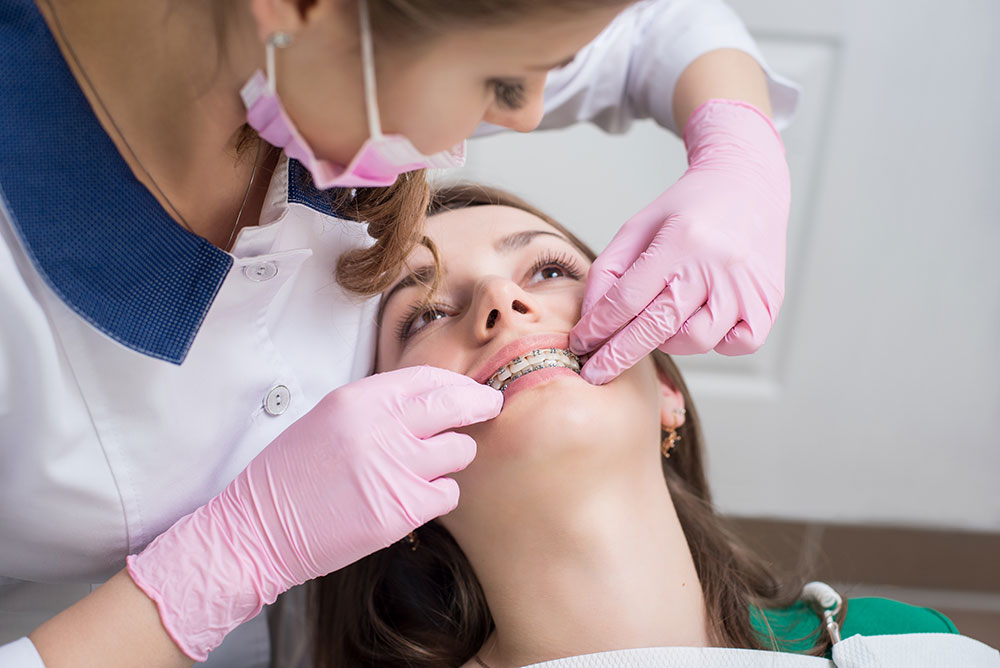Legacy Orthodontics Things To Know Before You Get This
Legacy Orthodontics Things To Know Before You Get This
Blog Article
Indicators on Legacy Orthodontics You Should Know
Table of Contents10 Easy Facts About Legacy Orthodontics Explained9 Simple Techniques For Legacy OrthodonticsThe smart Trick of Legacy Orthodontics That Nobody is DiscussingNot known Facts About Legacy OrthodonticsLegacy Orthodontics Fundamentals Explained
At Advanced Orthodontics, we give patients with a alternative therapy experience. Furthermore, we provide adjustable therapy timetables, flexible payment choices and a fun, delightful experience. leesburg invisalign. Telephone call ( 480) 357-4900 today for more details and schedule a visit.An orthodontist is a dentist trained to diagnose, avoid, and treat teeth and jaw irregularities. Orthodontists function with people of all ages, from youngsters to adults.
Malocclusion, or misaligned teeth, can lead to dental concerns, including tooth decay, gum disease, and hard or agonizing chewing. Not everyone is born with straight teeth. If you have a bad bite or big spaces in between your teeth, you might intend to get in touch with a dental expert specializing in orthodontic care.
4 Easy Facts About Legacy Orthodontics Shown
( Picture Credit History: DigitalVision/Getty Images) Orthodontists make use of fixed and removable dental tools, like braces, retainers, and bands, to alter the placement of teeth in your mouth. Orthodontic treatment is for oral problems, including: Misaligned teethBite problems, like an overbite or an underbiteCrowded teeth or teeth that are also much apartJaw misalignmentThe goal of orthodontic therapy is to enhance your bite.
While you might think of orthodontists as mostly for children or teenagers who need dental braces, they can deal with oral troubles at any type of age. Orthodontists participate in college, dental school, and orthodontic school.
All orthodontists are dentists, however not all dental practitioners are orthodontists. Orthodontic residency programs offer intensive, concentrated instruction for dental specialists. They focus on two locations: Exactly how to appropriately and safely move teeth Just how to appropriately guide advancement in the teeth, jaw, and faceOnce an orthodontist has actually finished training, they have the option to become board licensed.
The smart Trick of Legacy Orthodontics That Nobody is Talking About
Imbalance, or malocclusion, is one of the most common reason individuals see an orthodontist. It is genetic and is the result of size distinctions in between the top and lower jaw or in between the jaw and teeth. Malocclusion causes tooth congestion, an irregular jaw, or irregular bite patterns. Malocclusion is typically treated with: Your orthodontist affixes metal, ceramic, or plastic square bonds to your teeth.
Some people require a headgear to aid move teeth right into line with stress from outside the mouth. A retainer is a custom-made device that maintains your teeth in area.
They're frequently made use of on children. They can produce added room in the mouth without needing to pull teeth. If you have a major underbite or overbite, you might need orthognathic surgical treatment (likewise called orthodontic surgical treatment) to extend or shorten your jaw. Orthodontists use cords, medical screws, or plates to sustain your jaw bone.
You may need to see an orthodontist if you have: Crowding or otherwise adequate area for every one of your teethOverbite, when your upper teeth come by your base teethUnderbite, when your bottom teeth are also far forwardSpacing or concerns with gapsCrossbite, which is when your upper teeth fit behind your base teeth when your mouth is closedOpen bite or a vertical space between your front base and upper teethMisplaced midline, when the facility of your bottom and upper teeth don't line up Dealing with a dental malocclusion can: Make attacking, eating, and speaking easierImprove the balance of our face and your overall appearanceEase pain from temporomandibular joint disordersDifferent your teeth and make them much easier to clean up, helping stop dental cavity or dental caries It's often a dental expert that initially notices misaligned teeth during a routine exam.
The Best Guide To Legacy Orthodontics

During your very first orthodontic examination, you'll likely have: An oral examPhotos taken of your face and smileDental X-raysPanoramic (360 degree) X-rays of your face and headImpressions to produce molds of your teethThese tests will aid your orthodontist understand how to wage your therapy. leesburg orthodontics. An orthodontist is a dental professional that's had training to treat your teeth and jaw
An orthodontist is focused on your bite, so something like a cracked tooth would certainly be dealt with by a dentist. Orthodontists are concentrated on your bite, or the method your teeth fit with each other, and the straightness of your teeth.
Ever asked yourself just advice how stars constantly seem to have flawlessly straightened teeth? Orthodontists are dental professionals that concentrate on correcting irregularities in the teeth and jaws.
Our Legacy Orthodontics Statements

While braces are the most frequently acknowledged orthodontic therapy, orthodontists have a varied toolkit at their disposal. The certain approach chosen depends on the severity of the instance, the individual's age, and private choices. These reliable braces make use of a system of braces bound to the teeth and attached by cords.
Clear aligners, like Invisalign, are a preferred choice for people looking for a more discreet therapy choice. These detachable trays are tailor-made to progressively change the teeth's position. Headgear might be utilized together with dental braces or aligners to apply additional targeted pressures, specifically for fixing jaw discrepancies. In cases of narrow jaws, palatal expanders can be used to develop space for correct tooth placement.
Report this page